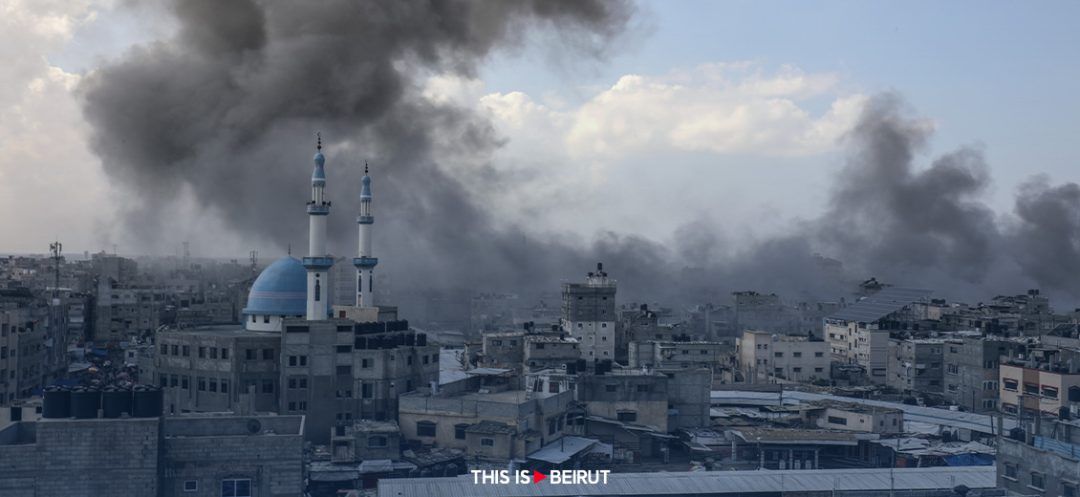- Home
- War in the Middle East
- The Interlocking Impasses and Cascading Tragedies

The tragic events of Rafah are quite illustrative of the interlocking impasses that characterize the ongoing war dynamics and their destructive fallouts. The dramatic turn, far from being incidental, reflects the in-built gridlocks of a conflict dynamic meant to perpetuate, feed on intentional victimization and lead to open-ended warfare. The operational platforms structured around the undifferentiated interfaces between the civil and the military combat zones (absence of civilian shelters despite the 500 kilometers of underground tunnels and instrumentation of civil infrastructures for military purposes…), the human shields strategy, the manipulation of the hostage issue and the deliberate exposure of civilians to the hazards of open warfare are not casual effects driven by the course of the war. They are pre-programmed scenarios geared towards long-term confrontations whose goal is to undermine Israel’s right to self-defense, let alone its moral, legal and political legitimacy (Palestine free from the river to the sea, the woke hackneyed shibboleth). Those who advocated a quietist posture have overlooked the fact that October 7, 2023, was an act of war (casus belli) and cannot be described otherwise. It’s a declaration of war based on calculated military and political projections which led to the vicious cycle of violence and counter-violence with no end in sight.
The Israelis, on their side, were caught off guard by the magnitude of the violence displayed in the October 7, 2023, attack. By and large, they came to terms with the existential nature of the security threats and the depth of hatred and its reverberations on the conflict and its prospects. The formation of a united war cabinet between the two rivals separated by basic intellectual and political differences testify to their common perception of the military threats and their scope. Their unity has eroded after eight months of joint undertaking, and their ideological and political fault lines have resurfaced and put at stake the viability of the war coalition and the transient security consensuses that prevailed so far. The ideological and political differences between the religious and ultranationalist Right and the opposition regarding the political solution with Palestinians, the need to reconnect the military strategy to the centrality of a negotiated political solution and the critical retrospective of the latest military and political developments have moved to the forefront of the Israeli political landscape. The successive tragedies are the byproducts of the interlocking dynamics based on asymmetric war, ideological agendas, corrosive cynicism and malevolence. The delusions of international power politics grandstanding are paid tragically by a helpless Palestinian civilian population unable to articulate its opposition to the unending cycles of violence.
The United States and the European community have conditionally endorsed Israel’s legitimate security concerns and right to self-defense, provided consistently for the humanitarian emergencies in Gaza and emphasized the need for a negotiated solution, while Hamas and its Iranian handlers pursued their subversion strategy at a dire humanitarian cost, and the Israelis re-emphasized their determination to upend the strategic equations all along the arc of conflict extending between Gaza, South Lebanon and the Golan Heights. Paradoxically enough, the new Cold War actors (Russia, China and associates) never engaged in humanitarian relief, while striving earnestly to stoke conflicts and strengthen polarization). The United Nations Secretary General and the international and criminal courts have failed in their political and legal adjudications and their utmost duty to help the warring factions control conflict dynamics, contain violence and re-engage a negotiated peace that recapitulates the trove of earlier agreements.
The leftist Spanish militancy officially advocating the annihilation of the State of Israel and recycling the Spanish civil war tropes (statement of the extreme left minister of Foreign Affairs, Yolanda Diaz), the Irish victimization pathos reiterating its conventional resentments and platitudes with no regard to the issues at stake, the inconsequential positioning of Norway, compared to the outperforming diplomatic breakthroughs of the immediate past, are altogether likely to weaken international mediations, consolidate the political and psychological fault lines and put an end to the diplomatic lifelines. Simulated humanitarian aspirations are cynical and counterproductive theatrics if they fail to inspire working political solutions, preempt the instrumentalization of power blocs organized around the Chinese-Russian tandem and help reconstruct the peace consensual matrix.
The fueling of political frenzy, the rallying of the emerging power blocs’ agendas and the politicization of international Justice are far from promoting moderation, military de-escalation and negotiated political solutions. The ideological hijacking of tragedies is a recipe for upcoming disasters and is unlikely to advance the cause of peace. Major Israeli constituencies are on a collision course with Benjamin Netanyahu and his coalition of religious and national extremes; nonetheless, they were compelled to mute their differences when the International Criminal Court and the International Court of Justice subverted the limits of their respective jurisdictions and imposed their ideological diktats, while overlooking the sovereignty of Israel and the magnitude of its security threats and setting a moral equivalence between the State of Israel and Hamas. This pandemonium has no chance of closing its gates unless actors move away from the extremes and engage in a final attempt at defining the outlines of a negotiated solution approved by the protagonists and validated by the international community. The cycles of violence are unlikely to abate while the interlocking dynamics are on track.
Read more




Comments